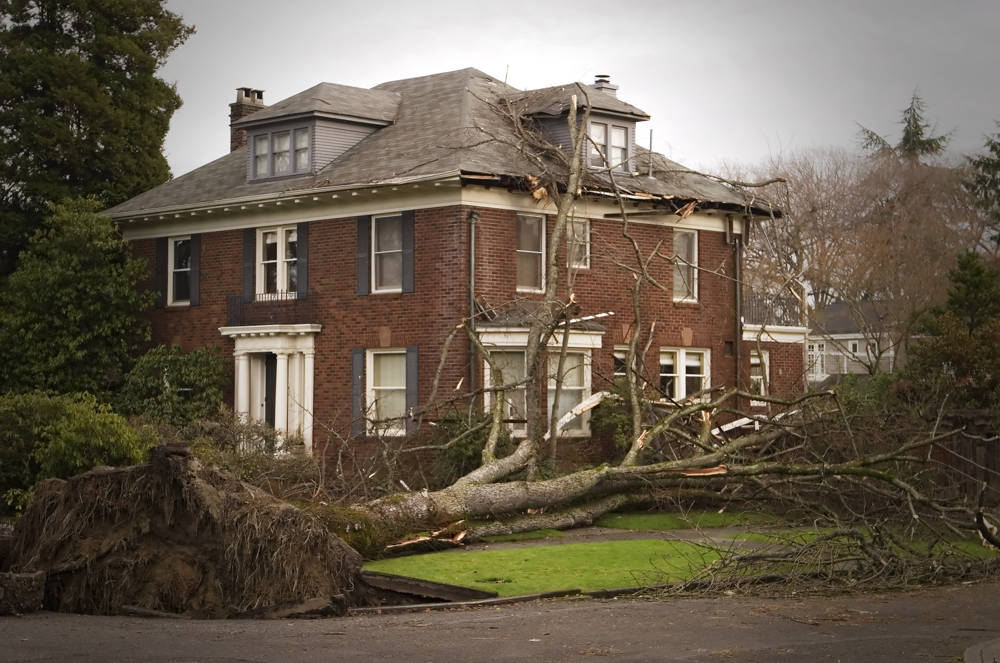Your Roof and Natural Disasters: How to Prepare and Repair
September 22, 2021 | Filed under: Consumer Education,Newsletter Articles,Research,Wind Resistance

As Hurricane Ida ravaged the Southeastern United States and moved north, many homeowners evacuated. Flooding, high winds, and pouring rain caused millions of dollars in property damage and displaced thousands of people from their homes. The Northeast experienced torrential rains and flooding, with sadly no time for evacuation. Louisiana suffered, again, with many parishes without power for a few weeks. Unfortunately, a winter storm hit Texas in February, and many residents lost power. These disasters have been devastating for homeowners throughout the country.
As the country sorts through Ida’s destruction, how can you prepare your home for disasters like it? And, if you have already been affected, how can you work towards getting back to normal?
Natural disasters are hard on your whole home, and especially your roof. Several clips have gone viral of roofs peeling off homes and buildings in Louisiana. When your roof is damaged, it must take priority to protect your home from the elements.
What to do before the storm
Unfortunately, you can’t do much to prepare your roof when a storm is coming. The best thing is to remove gunk from your gutters and possible sources of debris from your yard. Trimming trees to prevent them from falling onto your house is a good course of action too. Once you prepare your roof, you have to trust the quality of the installation and the material. Some materials are better at dealing with severe weather than others. For example, metal roofing can deal with high winds exceeding 100mph, while asphalt may blow right off. Ultimately, the installation matters most. A properly installed roof will hold up better than a poorly installed one.
What to do after the storm
As homeowners come back after the weather settles down and it’s safe to do so, they may find their roof has suffered damage. The best course of action when dealing with a damaged roof is caution. Roofs can leak, be unsafe to walk on, and have less obvious damage. Although missing shingles, holes in the roof, or a torn-off roof may be obvious, smaller penetrations, structural damage, and leaks are harder to spot. Enlisting the services of a roofing inspector can give you the information you need for repair, replacements, and insurance purposes. But, before you turn to an inspector, give your home a once-over from the ground.
Finding a qualified inspector is essential to ensure that your roof is safe and sound for you and your family. Don’t hire just anyone willing to get on your roof. Do your research and choose a licensed inspector with good reviews, someone you can trust. Their inspection should be thorough and detailed. You don’t want any damage to go unnoticed. Once the inspection is complete, listen to their recommendations and act accordingly. Your roof is not something to skimp on, so get it repaired or replaced if need be. Multiple opinions can be helpful, too, so you can get an unbiased sense of the damage.
When it’s time for your roof replacement or repair
For repairs and replacements, vet your contractor thoroughly. Read reviews, check out licensed contractors, and ask around. Replacing or repairing your roof is crucial, so pick the right person for the job. You don’t want your roof to leak a few months after it’s finished, so find someone with a good track record. Establish a relationship before the storm hits, and get on their list to check out your roof after the storm. Otherwise, you may wait weeks or even months for work to be done after things settle down.
When choosing a contractor, watch out for “storm-chasers” who follow natural disasters, preying on homeowners in need with temptingly low prices. These people may promise a great roof, but they are in business to sell you a terrible roof and then ignore your calls in five years when it fails. Instead, trust a local contractor with a history of work over someone offering a deal too good to be true. Especially if you live in an area prone to severe weather, find someone who can do repairs for you whenever you need it.
Here’s an additional article on weatherproofing your roof for hurricanes and wind resistance.
Whatever you face in the coming months, we hope you and your family stay safe. If your roof is damaged, find a quality contractor to repair or replace it and consider a material better suited to severe weather, like metal.
Our Metal Roofing Network Can Help
Our nationwide network of independent professional metal roofing contractors can help you recover from a storm and get your home prepared for the next. Please reach out to us for a no-obligation connection to quality, local help in your area.
